#Milwaukee history
Explore tagged Tumblr posts
Text
Finals Week
Finals week is here. Somehow no matter how prepared you are there's no escaping the stress of final exams. We're sharing some old articles from The Post to assure you that you are not alone.

(May 12, 1983) Volume 27 Number 60. Read the full issue here. UWM students vent their frustrations surrounding finals week.

(May 22, 1958) Volume 2 Number 39. Read the full issue here.
Fritz provides students advice on how to handle finals...which may not help you pass.

(May 7th, 1992) Volume 36 Number 56. Read the full issue here.
In this article the post reminds students to continue to take care of themselves and suggest some ways to do so.
We at the archives encourage you to take care of yourselves and wish you the best of luck on your exams. Have a wonderful winter break!
~Jenna-Rose
#uwm archives#milwaukee#uwm#uwmarchives#milwaukee history#wisconsin#history#newspapers#student life#campus#distcol
20 notes
·
View notes
Photo

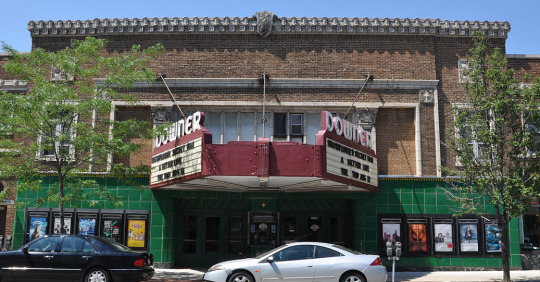
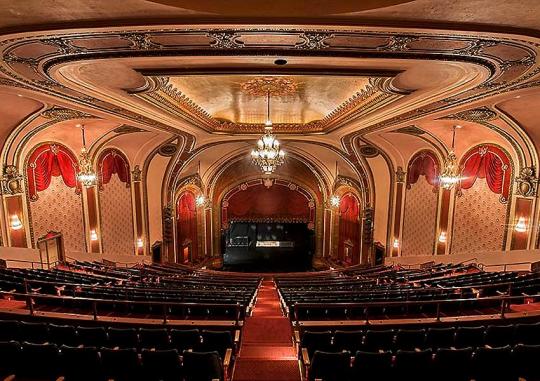
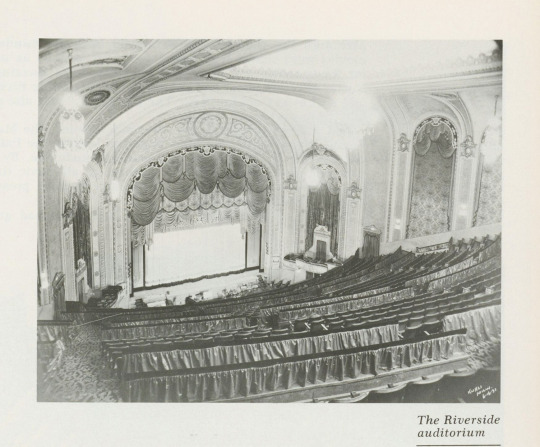


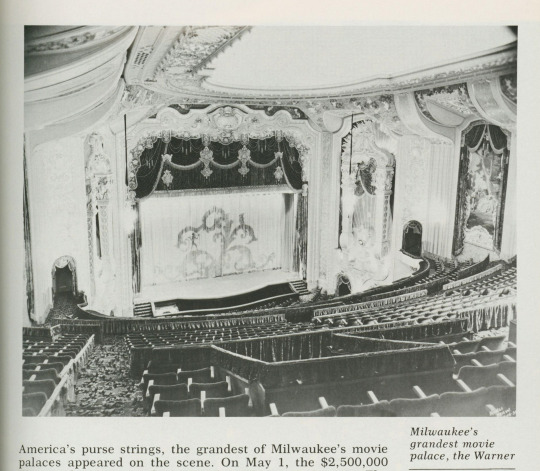

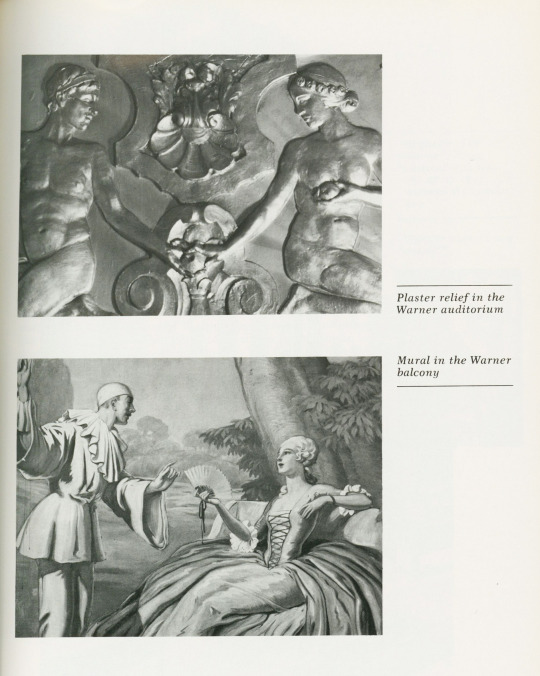

414 Day
It’s 414 Day, or Milwaukee Day! We celebrate Milwaukee on April 14 because the area code for the Milwaukee area is, you guessed it, 414! This year for 414 day we are celebrating a few of the spectacular movie palaces in Milwaukee that still act as theatres in some capacity today.
First shown here is Downer Theatre, located at 2589 N. Downer Ave on Milwaukee’s East Side. The Downer Theatre is Milwaukee’s oldest operating movie theatre in Milwaukee. It opened in 1915 and has been a movie theatre ever since! It may have a tile front now and a different marquee, but at its heart it is still a fine old movie theatre.
The second theatre shown here is the inside of Riverside Theater, located at 116 W Wisconsin Ave, opened in 1928 as a live performance center, and was a first-run movie theatre in the 1950s. Today, it is once again a live music and performance venue with a capacity of 2,450 people.
The third theatre shown here is the crème de la crème: the Warner Grand Theatre, located at 212 W. Wisconsin Ave. This theatre was opened in 1931 in place of the opulent Butterfly Theatre that once stood in its location. The theatre cost $2.5 million to build and was considered the most beautiful in the city. It continued as a movie theatre until the mid-1990s when it closed. In 2017, the Milwaukee Symphony Orchestra (MSO) purchased the theatre and renovated it back to its original glory. The theatre opened again in 2021 as the home of the MSO now called the Bradley Symphony Center, and it is gorgeous!
There are other movie palaces still in use in Milwaukee, too, like the famous Oriental Theatre on the East Side, which underwent its own renovation in recent years, and the Avalon Theater in Bay View, which offers an “atmospheric” experience with a starry sky lit in the ceiling in the main theatre.
All of the images in black and white are from Milwaukee Movie Palaces by Larry Widen and Judi Anderson, published in 1986 by Milwaukee County Historical Society.
These theatres are part of Milwaukee’s history as well as a part of their present! I highly recommend visiting any one of them for a movie or performance soon.
-- Alice, Special Collections Department Manager
#movie palaces#414 Day#Milwaukee Day#414 area code#Downer Theatre#Riverside Theater#Warner Grand Theatre#Oriental Theatre#Avalon Theater#Milwaukee#Milwaukee History#history#historical buildings#Alice
46 notes
·
View notes
Text


My dad and my Grandparents in the Milwaukee Journal, 1988
📍Milwaukee, WI
At the time he was in the Milwaukee Metal band, Megaton Blonde
2 notes
·
View notes
Text

La Perla restaurant was a Mexican restaurant which closed in 2016. They were known for their painted ads on buildings around the city and having a giant pepper ride.
#midwesternexistentialism#milwaukee wisconsin#la perla restuarant#milwaukeecore#wisconsincore#photography#urban photography#walker's point#walker's point milwaukee#milwaukee history#midwest core
0 notes
Text

How to stay young forever
#totally not a vampire#dark red#pomegranate#antiaging#cannibal girls#canon#hannibal lecter#art history#interview with the vampire#vampires#vampire aesthetic#cannibal aesthetic#cannibalistic#cannibalposting#film photography#hannibal#hannibal the cannibal#vampirism#bloodtastesgoodwtf#beautytips#bl00d mention#milwaukee#bones and all#vampire girl#yummy yum yum#yum yum#healthydrinks#give it a try#ribbons and bows#hannibal fandom
360 notes
·
View notes
Text

Halloween in Milwaukee, 1969.
376 notes
·
View notes
Text
Greenbelt Maryland. Or, how America almost solved housing only to abandon it.

**I AM NOT AN EXPERT! I AM JUST AN ENTHUSIST! DO NOT TREAT MY OPINIONS/SPECULATION AS EDUCATION!**
During the Depression America faced a housing crisis that rhymes with but differs from our own. It’s different in that there wasn’t a supply issue, there were loads of houses in very desirable areas, but they were still unaffordable as people’s incomes collapsed causing a deflationary spiral. While the housing supply subtly grew and succeeded demand, people simply couldn’t pay the meager rents and mortgages. Herbert Hoover failed to manage the Depression, while his inaction is greatly exaggerated, his policy of boosting the economy with works projects and protecting banks from runs failed and the depression only got more pronounced in his term. In comes Franklin Roosevelt, a progressive liberal much like his distant and popular cousin/uncle-in-law Teddy. Franklin’s plan was to create a large safety net for people to be able to be economically viable even if they’re otherwise poor. These reforms are called the New Deal and they did many controversial things like giving disabled and retired people welfare, giving farmers conditioned subsidies to manipulate the price of food, a works program to build/rebuild vital infrastructure, etc. One of these programs was the USHA (a predecessor of America’s HUD), an agency created to build and maintain public housing projects with the goal of creating neighborhoods with artificially affordable rents so people who work low-wage jobs or rely on welfare can be housed.
In this spirit, the agency started experimenting with new and hopefully efficient housing blueprints and layouts. If you ever see very large apartment towers or antiquated brick low-rise townhouses in America, they might be these. The USHA bought land in many large and medium-sized cities to build “house-in-park” style apartments, which is what they sound like. Putting apartment buildings inside green spaces so residents can be surrounded by greenery and ideally peacefully coexist. Three entire towns were built with these ideas outside three medium-sized cities that were hit hard by the depression; Greenbelt outside DC, Greenhills outside Cincinnati, and Greendale outside Milwaukee. The idea was to move people out of these crowded cities into these more sustainable and idyllic towns. There were many catches though, the USHA planned for these towns to be all-white, they used to inspect the houses for cleanliness, they required residents to be employed or on Social Security (which basically meant retired or disabled), they also had an income limit and if your income exceeded that limit you were given a two-month eviction notice, and you were expected to attend town meetings at least monthly. While the towns didn’t have religious requirements they did only build protestant churches. Which is an example of discrimination by omission. While a Catholic, Jew, Muslim, etc could in theory move into town they also couldn’t go to a Catholic church, synagogue, or Islamic center without having to extensively travel. Things planned communities leave out might indicate what kind of people planned communities want to leave out. Basically, the whole thing was an experiment in moving Americans into small direct-democracy suburbs as opposed to the then-current system of crowded cities and isolated farm/mine towns. This type of design wasn’t without precedent, there were famously company towns like Gary and Pullman which both existed outside Chicago. But those lacked the autonomy and democracy some USHA apparatchiks desired.
The green cities were a series of low-rise apartments housing over a hundred people each, they were short walks from a parking lot and roads, and walking paths directly and conveniently led residents to the town center which had amenities and a shopping district. Greenbelt in particular is famous for its art deco shopping complex, basically an early mall where business owners would open stores for the townspeople. These businesses were stuck being small, given the income requirements, but it was encouraged for locals to open a business to prove their entrepreneurial spirit. Because city affairs were elected at town meetings the city was able to pull resources to eventually build their own amenities the USHA didn’t originally plan for like a public swimming pool or better negotiated garbage collection.
These three cities were regarded as a success by the USHA until World War II happened and suddenly they showed flaws given the shift in focus. These towns housed poor people who barely if at all could afford a car, so semi-isolated towns outside the city became redundant and pointless. The USHA also had to keep raising the income requirement since the war saw a spike in well-paying jobs which made the town unsustainable otherwise. During the war and subsequent welfare programs to help veterans, these green cities became de facto retirement and single-mother communities for a few years as most able-bodied men were drafted or volunteered. Eventually, the USDA would make the towns independent, after the war they raised the income limit yet again and slowly the towns repopulated. As cars became more common and suburbanization became a wider trend these towns would be less noticeably burdensome and were eventually interpreted as just three out of hundreds of small suburban towns that grew out of major cities. They were still all-white and the town maintained cleanliness requirements; after all they lived in apartments it just takes one guy’s stink-ass clogged toilet to ruin everyone’s day.
By the 1950’s these towns were fully independent. Greendale and Greenhills voted to privatize their homes and get rid of the income limit all together so the towns can become more normal. Greenhills, Ohio still has many of these USHA-era houses and apartments, all owned by a series of corporations and private owners. Greendale, Wisconsin property owners have demolished most of these old houses and restructured their town government so most traces of its founding are lost. But Greenbelt, Maryland still maintains a lot of its structure to this day. Greenbelt has privatized some land and buildings, but most of the original USHA apartments are owned by the Greenbelt Homes, Inc cooperative which gives residents co-ownership of the building they live in and their payments mostly go to maintenance. Because Greenbelt was collectively owned the House Un-American Activities Committee would blacklist and put on trial most of Greenbelt’s residents and officials. Though they didn’t find much evidence of communist influence, the town was a target of the red scare by the DMV area, residents were discriminated, blacklisted, and pressured into selling their assets. While Greenbelt did commodify some of the town, the still existing co-ownership shows the town’s democratic initiative to maintain its heritage. The green cities desegregated in the 50’s and 60’s depending on state law, Greenbelt was the last to desegregate under the Civil Rights Act of 1964, while discrimination persisted for years by the 1980’s the town would become half non-white, today the town is 47% black and 10% Asian.
Though these towns largely integrated with a privatized and suburbanized America, they do stand as a memorial to an idea of American urbanism that died. They were designed for walkability and were planned to be more democratic and egalitarian towns, with the conditions that came with segregation and government oversight. You can’t ignore the strict standards and racism in their history, but you can say that about many towns. How do you think America would be different if more cities had green suburbs that were more interconnected and designed for community gatherings?
#urbanism#DC#maryland#dmv#Cinncinatti#milwaukee#ohio#wisconsin#New Deal#history#fdr#franklin roosevelt#politics#urban#city#apartment#housing#great depression#article#co op#socialism#segregation#discrimination#housing crisis#landlords#united states
213 notes
·
View notes
Text

Copper axe heads. Discovered in the Great Lakes region of the United States. From the Old Copper Culture. Old Copper Culture was active throughout the Great Lakes region from 7500 to 1000 BCE. They mined copper (hence the name) and made arrowheads, axes, fishhooks, bowls, religious iconography and much more with the metal. As time went on the metal became less practical for tool production and took on a more ornamental purpose.
The ancient axes pictured above are located in the Milwaukee Public Museum (MPM).
#art#culture#history#ancient culture#ancient art#ancient#old copper complex#old copper culture#native american history#american history#american art#copper#archeology#anthropology#native american#Milwaukee#Milwaukee public museum#museum#prehistoric
225 notes
·
View notes
Text
Milwaukee is truly a hidden gem in the Midwest!
Harley-Davidson Quick History:
Harley-Davidson was founded in Milwaukee in 1903 by William S. Harley and Arthur Davidson. Milwaukee has been the headquarters ever since.
In the 1960s, Harley-Davidson began collecting and preserving motorcycles and artifacts related to the brand's history.
In the 1990s, plans were made to create a museum to showcase these items. Construction on the museum began in 1997.
The Harley-Davidson Museum first opened its doors on July 12, 2008 in a newly constructed building located along the Menomonee River just south of downtown Milwaukee business district.
The museum features over 450 Harley-Davidson motorcycles and hundreds of thousands of artifacts
In 2016, a new 30 acre campus opened around the museum called Harley-Davidson Museum Campus. There's an outdoor space for events, a restaurant, and additional amenities.
Today, the Harley-Davidson Museum reportedly attracts over 300,000 visitors annually and is a local and regional favorite.
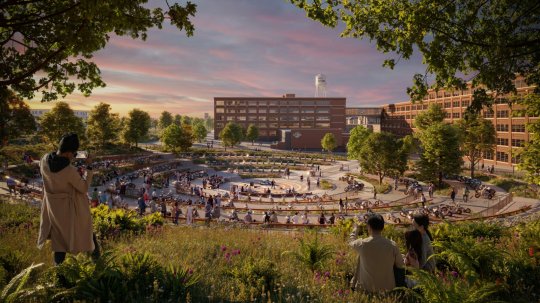


Harley-Davidson Park | Milwaukee | Heatherwick Studio | Devisual
7 notes
·
View notes
Text










#milwaukee#dahmertumblr#jeff dahmer#1990s#1980s#canon#wholesome#photographers on tumblr#film photography#art history#vintage aesthetic#1960s#my friend dahmer#cannibalposting#cannibalistic#they could never make me hate you#im hyperfixating again#hell is a teenage girl#im going insane#tcc tumblr#tc community#tcc fandom#tccblr#true cringe community#true crume#moon#mine#quotes#haildahmer#im so mentally ill
19 notes
·
View notes
Text
Winter On Campus
The winter weather today inspired us to share a few photos of UWM winter's past from the UWM Photo Collection

Chapman Hall in the Snow-
Chapman Hall was acquired in the purchase of the Milwaukee- Downer College campus. Chapman Hall served as the library until the Downer College closed its campus and merged with Lawrence College in Appleton in 1964.

Mitchell Hall in Winter-
Mitchell Hall-UWM main building winter scene. Mitchell Hall was originally part of the State Normal School founded in 1909.

Students in Snowstorm Outside the Union-
Circa 1972.
~Jenna-Rose
#uwm archives#archives#milwaukee#milwaukee history#photography#wisconsin#snow#cold outside#cold weather
23 notes
·
View notes
Text

CMStP&P train, engine number 4, engine type 4-4-2 Passenger; 7 cars. Photographed: south of Deerfield, Ill., June 21, 1946.
85 notes
·
View notes
Text

Blatz Brewing Co, 1952
#Milwaukee beer#ad#1952#mid-century#vintage#advertisement#icebox#refrigerator#men#history#midnight snack#finest beers#midcentury#advertising#retro#1950s#mid century
100 notes
·
View notes
Text











The other day, we decided we needed an outing to shake us out of our post-election funk. It was free day at the Milwaukee Public Museum, so we took the kiddos on a field trip. I hadn’t been there since my oldest was tiny, about a decade ago, and my youngest had never been. These are just some of the photos I took of my favorite exhibits.
(November 7)
#jessie lynn mcmains#photography#milwaukee#milwaukee public museum#natural history#indigenous history#my photos
8 notes
·
View notes
Text


#tw blood#vampire aesthetic#vampirism#film photography#gifs#yummy yum yum#interview with the vampire#vampires#cannibal aesthetic#hannibal the cannibal#cannibal girls#cannibalistic#drinking blood#canon#hannibal#hannibal lecter#dr lecter#wholesome#photographers on tumblr#cannibalposting#yum yum#drinks#energy drink#milwaukee#vintage aesthetic#art history#dark red#vinatge#retro aesthetic#moon
29 notes
·
View notes
Text

Milwaukee, Wisconsin: The US Steel fleet, moored for the winter in the Kinnickinnic Basin, during the 1940s.
40 notes
·
View notes